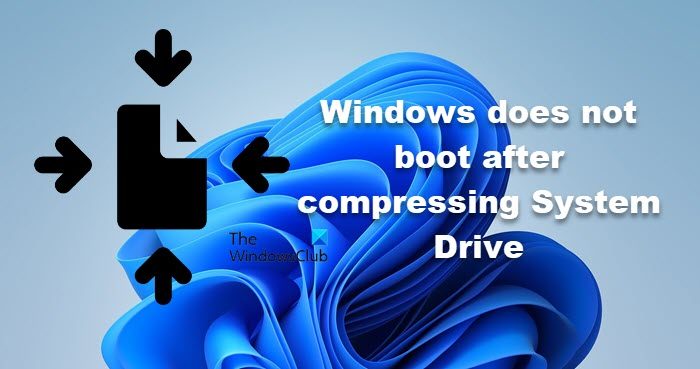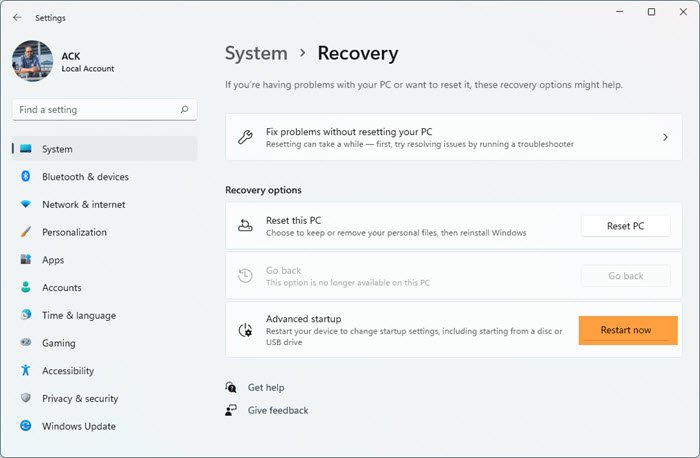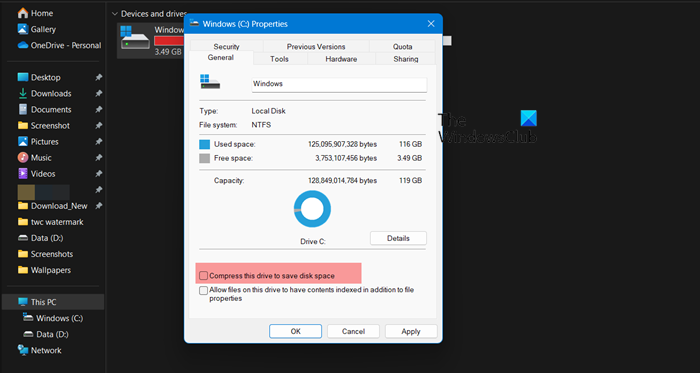Some folks compress files, folders, or even drives to save some disk space. However, you may have noticed that sometimes Windows fails to boot after compressing the System Drive. In this post, we will see what you can do if you encounter such an issue.

Compressed System Drive and now Windows will not boot
Using the Compress feature on the system drive can compress some of the files required to boot the Windows OS. This could simply make your Windows computer NOT boot, or you could even end up with a boot loop!
In this article, I’ll show you what you can do if your Windows computer fails to boot or goes into a boot loop after compressing the system drive OS drive.
You can try a couple of methods. I’ll list all of them so you can find the one that works best for you.
- Run Startup Repair
- Manually uncompress the files
- Manually rebuild the MBR
Let us talk about them in detail.
1] Run Startup Repair

The first method is to run the Startup Repair. It may or may not work, but it’s the easiest method to try. Run the Startup Repair three different times, because sometimes it takes three runs to fix a problem. If this does not fix your problem, move on to the next option.
Read: Repair Windows using Installation Media.
2] Manually uncompress the files

The next method is to manually uncompress the files of the Windows installation drive.
Follow these steps:
- Insert the Windows installation disc or USB flash drive, or a system repair disc, and then shut down your computer.
- Then restart your Computer
- When prompted, press any key, and then follow the instructions that appear
- On the Install Windows page, or on the System Recovery Options page, choose your language and other preferences, and then click Next.
- Click Repair your computer.
- Select the Windows installation you want to repair, and then click Next.
- Now click on Load Drivers.
- You’ll get this screen. Click OK.
- Now you’ll get an explorer window. Click on Computer
- Right-click on Installation Drive which would be the C drive in most cases. Select Properties.
- Uncheck on Compress this drive to save disk space and click Apply/OK.
- Make sure it says “uncompress” and ensure that “Apply changes to drive C:\, subfolders and files” is selected.
- Now click “OK” and wait for few minutes until it uncompresses.
- Once it’s done reboot your computer normally and see if it loads.
This should work. If it does – great! If not, you have just one last chance!
Read: Windows automatically compressing files.
3] Manually rebuild the MBR
The last method is to manually rebuild the MBR or Master Boot Record. There are a lot of ways to do that. You can follow this video tutorial created by me on how to Rebuild MBR. For details on this, check this tutorial on how to fix the Bootmgr is Missing issue.
Read: Windows PC will not boot up or start
Can compressing C drive cause problems?
Compressing the C drive may sometimes cause system instability as it introduces an additional processing layer for data access and writing, which may lead to crashes. You may also notice a drop in performance as more CPU will be required when your system tries to decompress a compressed file when it needs to access it. Hence, one should refrain from compressing the drive where their operating system is installed.
Read: Windows computer unable to boot to BIOS
How do I compress a Windows system drive?
To compress a system drive, open File Explorer. Now, go to This PC, right-click on the drive you want to compress, tick Compress this drive to save disk space and click Apply > OK.
Also Read: Windows computer won’t boot after System Restore.